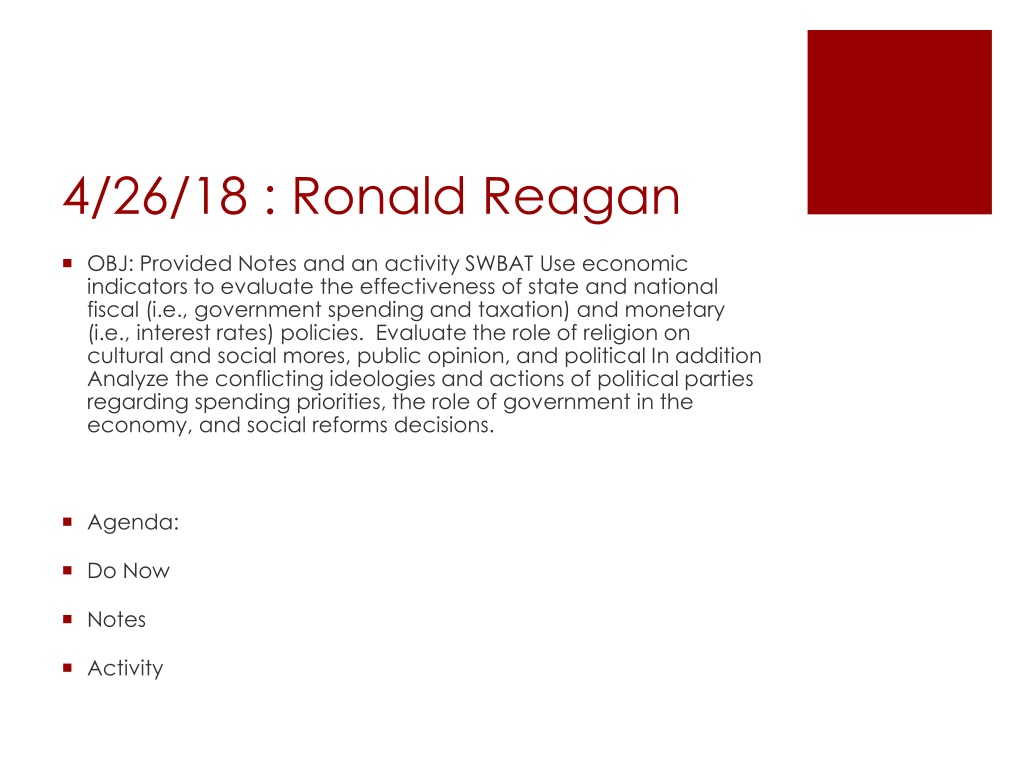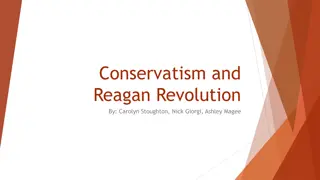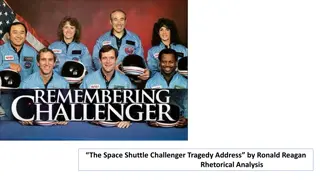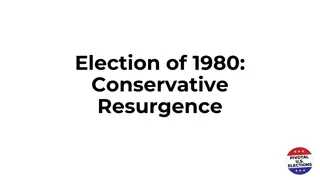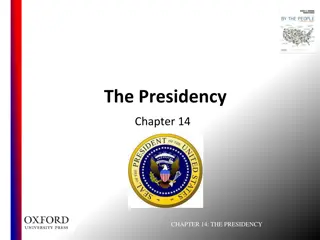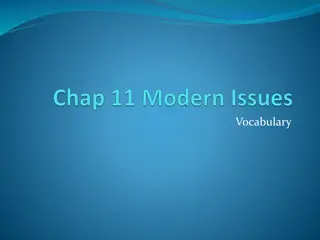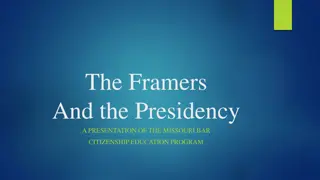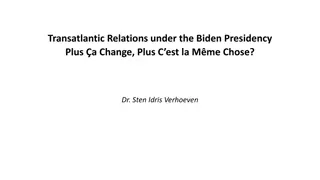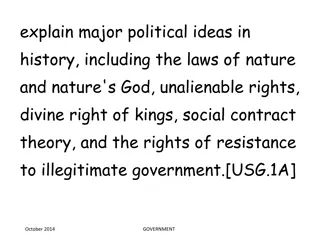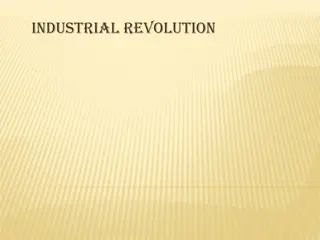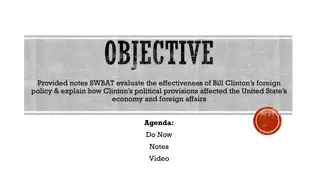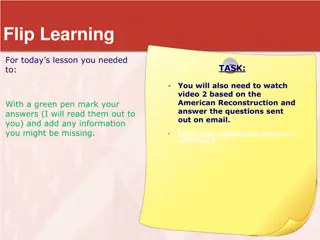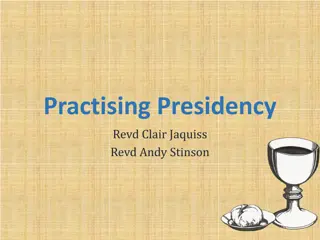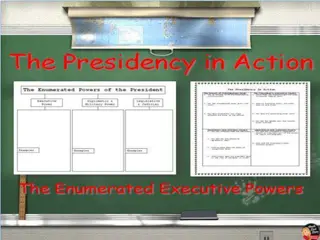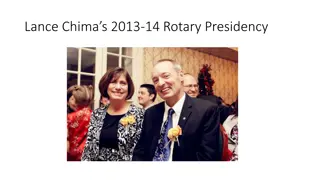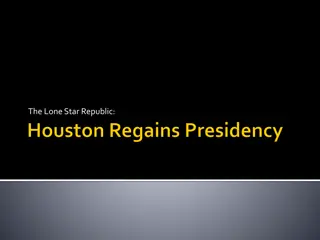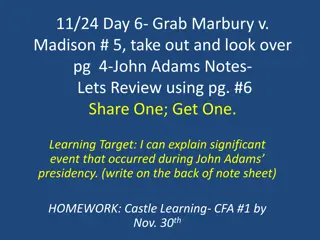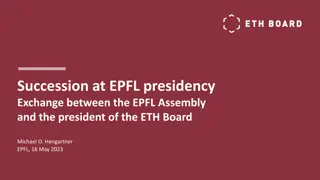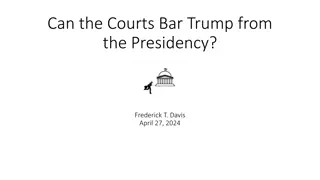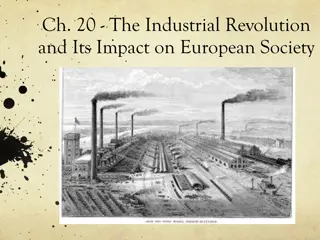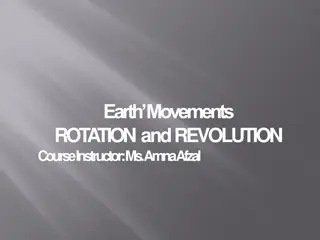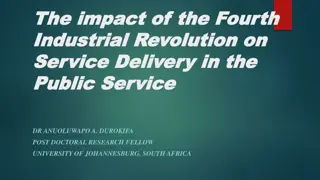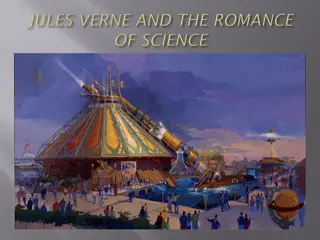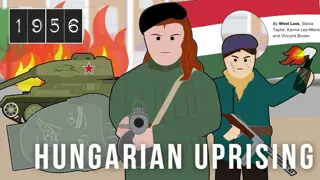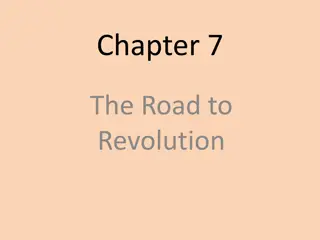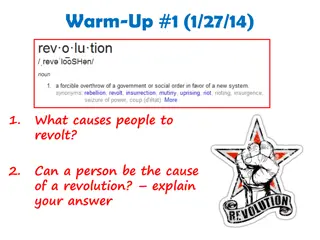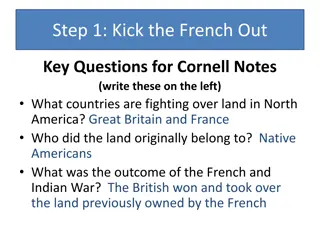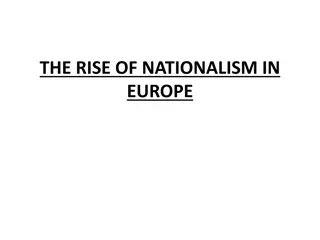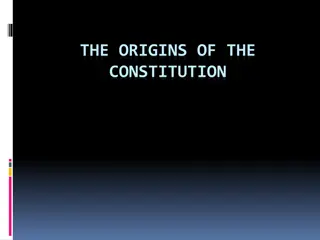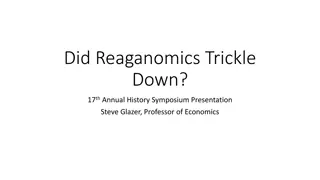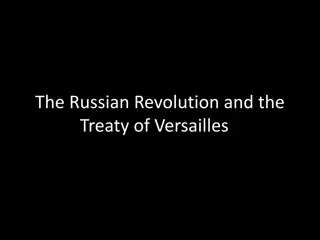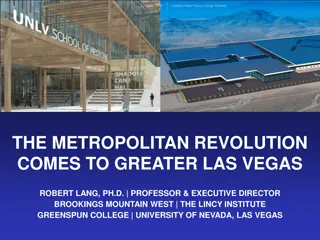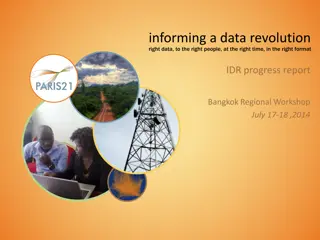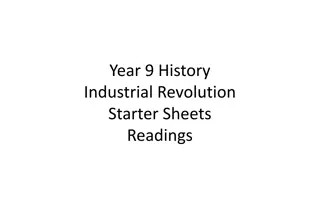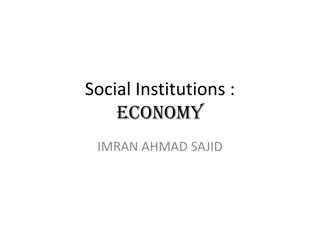The Reagan Revolution: Ronald Reagan's Presidency and Impact
Ronald Reagan, known as the Great Communicator, implemented a vision of smaller government and revitalized American conservatism during his presidency. His Reagan Revolution capitalized on public frustration, leading to a landslide victory in the 1980 election. He garnered support from various groups, including the New Right and religious conservatives, who believed in a return to stability and traditional values. Reagan's tenure marked a shift in economic and social policies, emphasizing fiscal responsibility and a strong national identity.
Download Presentation

Please find below an Image/Link to download the presentation.
The content on the website is provided AS IS for your information and personal use only. It may not be sold, licensed, or shared on other websites without obtaining consent from the author. Download presentation by click this link. If you encounter any issues during the download, it is possible that the publisher has removed the file from their server.
E N D
Presentation Transcript
4/26/18 : Ronald Reagan OBJ: Provided Notes and an activity SWBAT Use economic indicators to evaluate the effectiveness of state and national fiscal (i.e., government spending and taxation) and monetary (i.e., interest rates) policies. Evaluate the role of religion on cultural and social mores, public opinion, and political In addition Analyze the conflicting ideologies and actions of political parties regarding spending priorities, the role of government in the economy, and social reforms decisions. Agenda: Do Now Notes Activity
Do Now: President Carters Crisis of Confidence Read Jimmy Carter s Crisis of Confidence Speech also known as the Malaise Speech What is it most notable for? Reprimanding Americans for falling into a moral and spiritual crisis in their quest to acquire material goods
Ronald Reagan Born Feb. 6, 1911 President of the Screen Actors Guild Governor of California 1966-1974 Oldest President ever to be elected at 69 years of age Used his story telling ability to make a point, deflect criticism, and win over doubters Ronald Reagan envisioned a smaller government, a greater America Known as the Great Communicator
The Reagan Revolution Ronald Reagan capitalized on the public's frustration. When he ran for the presidency against Carter in 1980, he asked Americans, "Are you better off than you were four years ago?
1980 Election Reagan won a landslide victory, carrying 43 states and almost 51 percent of the popular vote compared to Carter's 41 percent. In addition, the Democrats lost the Senate for the first time since 1954
The New Right Reagan drew strong support from white Southerners, suburban Roman Catholics, Evangelical Christians, and particularly, The New Right. Religious conservatives included many different faiths, with the largest being Evangelical Protestant Christians The new conservative coalition of voters shared the belief that American society had lost its way. Americans had lost faith in their government, lost confidence in the economy, and longed for stability and a return to a better time.
The New Right Tactics included: Making the political, personal Identity politics- exclusive political stance for people of the same race or religion Small group sessions to raise consciousness Concerns Included: Homosexuality Abortion Affirmative Action
Reaganomics- supply side economics To stimulate the economy, he persuaded Congress to slash tax rates. Conservative Southern Democrats also supported the slash in tax rates, they were nicknamed Boll Weevils Strengthened the nation's defenses, doubled the defense budget--to more than $330 billion by 1987 Plans to deregulate the EPA (Environmental Protection Agency) Reagan questioned the legitimacy of the agency as an independent authority
Reaganomics supply side economics A combo of budget & tax reduction would Stimulate new investments Boost productivity Foster dramatic growth economically * Essentially, the goals were: dismantle the welfare state and shrink the size of the federal government *First Results: Sharp recession and rise in unemployment
Reagan Doctrine of American Activism in the Third World MOST EXERCISED IN GRENADA AND NICARAGUA Broke doctrine of Containment , Reagan s foreign policy was that the United States would actively push back the influence of the Soviet Union. The Reagan administration focused much of its energy on supporting armies to reduce or eliminate Soviet influence. Examples of the Reagan Doctrine s application: In Afghanistan, the United States was provided aid to anti-Soviet freedom fighters (mujahadeen) ultimately, helping to force Soviet troops to withdraw In Nicaragua, the United States sponsored the contra movement in an effort to force the leftist Sandinista government from power. .
Iran Contra August 1985 March 1987 Sandinistas (Radicals) had overthrown Nicaragua's military dictatorship and were threatening to do the same in El Salvador. The Contras were a coalition of paramilitary groups that opposed the Sandinistas. Fearing the spread of communism in the Western hemisphere, Reagan dubbed the Contras freedom fighters and channeled weapons and C.I.A. support to them. Congress remained skeptical, though; in 1984, it passed the Boland Amendment banning U.S. military aid to the Contras. Administration officials did not give up their support of the Contras, they looked for new sources of funds to send to Nicaragua.
Iran Contra August 1985 March 1987 Profits from this illegal arms trade, were then used to fund the Contras in their war against Nicaragua s radical Sandinista government. Several officials went to jail, and much evidence suggested that Reagan had allowed the illegal acts. It is clear that he supported the sale of weapons to Iran for the release of hostages and he supported the covert aid to the Contras. No one ever testified that he approved the weapons sales in order to fund the Contras. This showed Reagan planned elaborate foreign policy moves
Reagan Webquest Go to helpful links so you can copy and paste the link into the URL.
Ending the Cold War Mikhail Gorbachev becomes the new Soviet leader called for sweeping political liberalization (glasnost) and economic reform (perestroika) Reagan s SDI plan forced Gorbachev to admit that the USSR could not keep up with the arms race Gorbachev withdrew Soviet tank divisions from the communist nations in Eastern Europe Reagan was able to work with Gorbachev to reduce Cold War tensions Gorbachev s reforms helped bring an end to communism Eastern European nations broke from Soviet control & created democracies
Berlin Wall On June 12, 1987, President Ronald Reagan gave an historic speech to the people of Berlin. It was here that Reagan spoke the famous phrase: "General Secretary Gorbachev, if you seek peace, if you seek prosperity for the Soviet Union and Eastern Europe, if you seek liberalization: Come here to this gate! Mr. Gorbachev, open this gate! Mr. Gorbachev, tear down this wall! After Reagan had left office in 1988, In November of 1989, the Berlin Wall came down
Reagans Legacy He helped inflation rates Restored public confidence in government Presided over the beginning of the end of the Cold War. Doubled the defense budget Named the first woman to the Supreme Court Launched a strong economic boom Created a heightened sense of national unity.
Video https://www.youtube.com/watch?v=Uc7O- SLoICw
